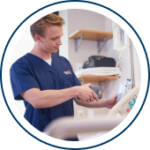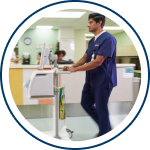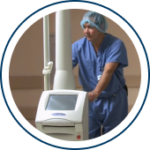HOW TO IMPROVE HOSPITAL SUPPLY CHAINS
Update Your Healthcare Supply Chain Management
The next generation of supply chain leaders have an opportunity to add increased value in hospitals and make measurable contributions to profitability, patient care and growth. According to a Cardinal Health study, 85% of hospital executives say that reducing healthcare supply chain waste and related costs topped their strategic priority lists. Those surveyed also said they expect supply chain leaders to develop and implement new strategies that will not only reduce costs, but improve clinical outcomes and elevate the overall patient experience.
Today, supply chain is charged with optimizing capital acquisitions, reducing non-labor spend and standardizing vendors. But as senior leadership has begun to more closely examine clinical and operational processes, it is becoming clear that next-generation supply chain teams can have a tremendous impact on clinical outcomes, patient satisfaction, brand reputation, reimbursement levels and staff job satisfaction. Today, supply chain spend consumes about 40% of a hospital’s total operating budget, which is second only to labor costs. So, not only is the impact of the modern supply chain far-reaching, it is core to the overall financial success of the hospital.
Four Tips to Drive out Equipment Waste and Optimize Care
Manage Medical Devices Through to the Point of Use
An emerging best practice is mapping the supply chain through the care delivery process. This allows for a clearer view of what equipment is needed, what’s in circulation and how various factors — like census, patient need and equipment utilization — affect demand. However, that is easier said than done. Many institutions are considering real-time locating systems (RTLS) to track equipment, but RTLS doesn’t solve the problem of mobilizing equipment where needed, cleaning equipment between use or tracking equipment use. Forward-thinking supply chain leaders instead rely on a managed service provider to track, manage and ensure optimal utilization of equipment — so they can make better purchase decisions and have a positive impact on patient care.
Leverage Utilization Data to Decrease Equipment Costs
Supply chain teams issue thousands of unnecessary POs every year for movable medical equipment (MME) and specialty beds because they don’t have visibility to how often equipment is sitting idle. This lack of visibility results in costly, excess equipment rental and purchase costs. Solving the problem begins with understanding equipment utilization rates. Managed equipment service providers often capture relevant usage data and turn that information into supply chain analytics, which can be leveraged to ensure appropriate PAR levels.
Collect Insightful Utilization Analytics by Partnering with Nursing and Clinical Engineering
Engaging these teams can reveal powerful supply chain insights. Nurses know how much time is spent searching for ready equipment, often while it sits idle waiting to be cleaned or serviced. Clinical engineering can tell you how much time is wasted fixing “broken” equipment that results from user error, as well as which equipment is most and least reliable. An end-to-end managed equipment service provider can help bridge the gap between nursing, clinical engineering and supply chain, so you can turn that hidden knowledge into actionable purchasing analytics.
Understand and Track the True Total Cost of Equipment
Every single medical device brought into a hospital needs to be properly maintained and repaired. When you start factoring these service costs — plus the costs to implement, train, and upgrade — the true cost of a piece of medical equipment far exceeds the acquisition cost. Not to mention, most hospitals have 30% more equipment than they need because they don’t track utilization. This means they bear the cost burden of servicing all this excess equipment. An end-to-end equipment management company that can create a partnership between supply chain, clinical engineering and nursing can reveal powerful insights on these costs, leading to longer device life, reduced parts costs and greater overall utilization.
Our Onsite Management Portfolio
Insights for a Better Equipment Experience
Elevate Your Team – Improve Your Hospital




